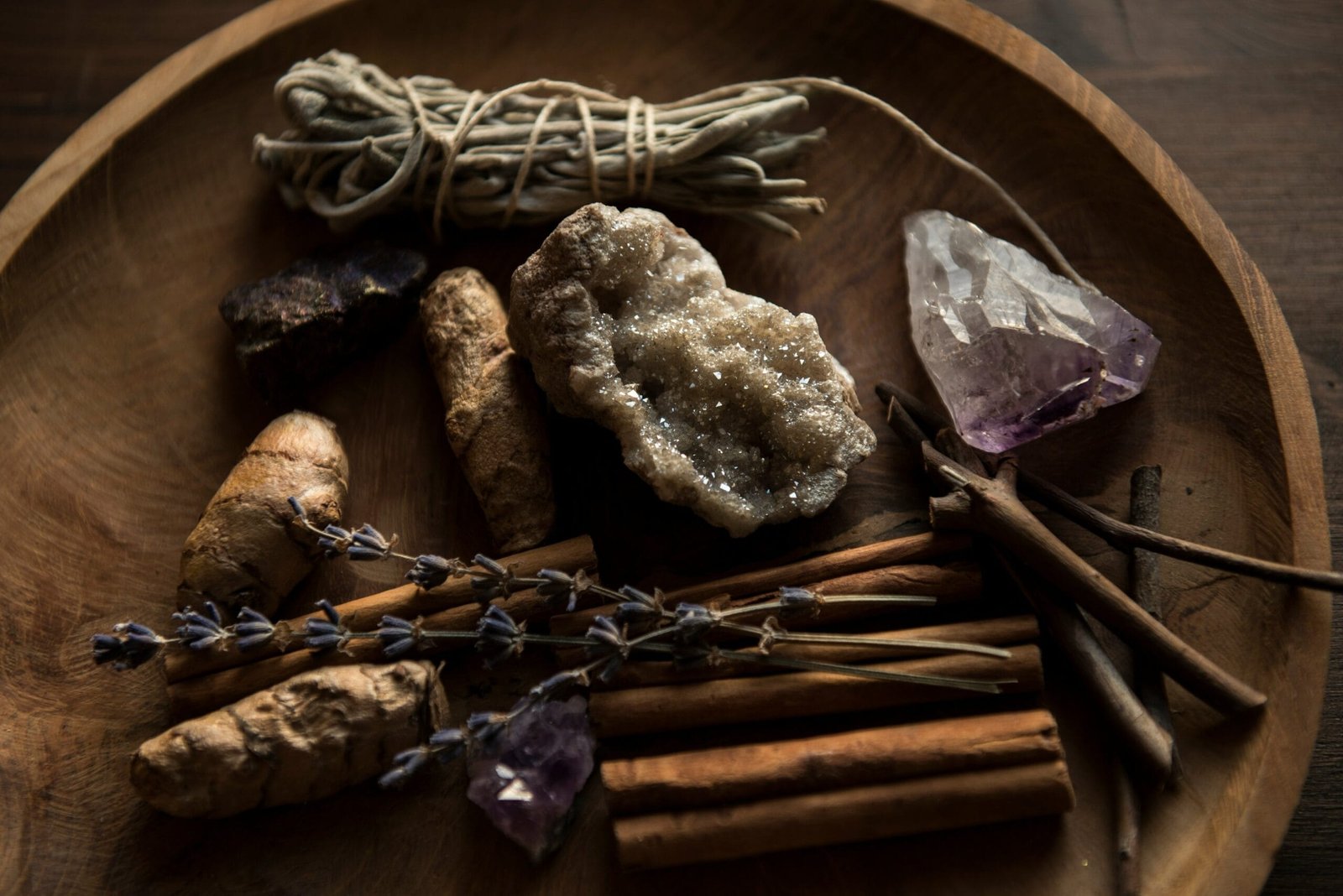The Wheel of the Year: A Guide to Pagan Celebrations
The Witch’s year begins with Samhain and flows through a cycle of festivals that mark the changing of the seasons and the ever-turning wheel of life. These celebrations, often based on ancient pagan traditions, honor nature, the cycles of the sun, and the earth’s transformation throughout the year. Each festival brings a different energy, whether it’s a time for reflection, celebration, or planting new seeds for the future.
Samhain (October 31st – November 1st)
Often considered the witch’s New Year, Samhain marks the end of the harvest and the beginning of the darker half of the year. It’s a time to honor ancestors, reflect on the cycle of death and rebirth, and connect with the spiritual realm as the veil between the worlds is said to be at its thinnest. In the southern hemisphere, Samhain is celebrated around April 30th.
👉 Learn more about Samhain
👉 Samhain vs. Halloween: What’s the Difference?
👉 Witchy Halloween Rituals for Celebrating Samhain
Yule (December 21st – Winter Solstice)
Yule, also known as the Winter Solstice, celebrates the rebirth of the sun. It’s the longest night of the year, and from this point on, the days begin to grow longer. Pagans celebrate by lighting candles, decorating with evergreens, and honoring the return of the light. In the southern hemisphere, Yule is celebrated around June 21st.
👉 Learn more about Yule
👉 Yule Calendar
Imbolc (February 1st – 2nd)
Imbolc is a time of purification and new beginnings, often associated with the goddess Brigid. It marks the midpoint between winter and spring, and the first stirrings of life can be seen as the days slowly lengthen. It’s a time for setting intentions for the year ahead. In the southern hemisphere, Imbolc falls around August 1st.
👉 Imbolc: A Celebration of Light and Renewal
Ostara (March 20th – Spring Equinox)
Ostara celebrates the balance of light and dark as day and night are equal. It’s a time of renewal, fertility, and growth, symbolizing the awakening of the earth and the return of life after the long winter. Eggs, flowers, and hares are common symbols of this festival. In the southern hemisphere, Ostara is celebrated around September 20th.
👉 Ostara: The Spring Equinox and the Balance of Light
Beltane (April 30th – May 1st)
Beltane is a fire festival celebrating fertility, passion, and the blossoming of life. It’s a time to honor the union of the divine feminine and masculine energies and the vibrant, creative force of nature. Dancing around the maypole and lighting bonfires are traditional Beltane customs. In the southern hemisphere, Beltane takes place around October 31st.
👉 Beltane: A Celebration of Fire, Passion, and Fertility
Litha (June 21st – Summer Solstice)
Litha, the Summer Solstice, celebrates the peak of the sun’s power and the abundance of the earth. It’s the longest day of the year, and pagans honor the sun’s strength, as well as the balance between light and dark. Bonfires, feasting, and celebrating nature are common traditions. In the southern hemisphere, Litha falls around December 21st.
👉 Litha: Celebrating the Summer Solstice and the Power of the Sun
Lammas/Lughnasadh (August 1st)
Lammas, or Lughnasadh, is the first of the harvest festivals, celebrating the bounty of the earth and the gathering of the first crops. It’s a time of gratitude for abundance and reflection on the hard work that has gone into bringing the harvest. In the southern hemisphere, Lammas is celebrated around February 1st.
👉 Lammas: A Celebration of Harvest and Gratitude
Mabon (September 20th – Autumn Equinox)
Mabon marks the second harvest and the balance of day and night as the Autumn Equinox brings equal light and dark. It’s a time of giving thanks for the abundance of the harvest and preparing for the coming winter. Like Ostara, it represents a moment of balance. In the southern hemisphere, Mabon is celebrated around March 20th.
👉 Mabon: A Celebration of Balance and the Second Harvest
The Wheel of the Year reflects the eternal cycle of life, death, and rebirth, offering moments to honor nature’s rhythms and connect with the energies of each season. Whether you celebrate in the northern or southern hemisphere, these festivals provide a spiritual roadmap for the year.
Photo by Joanna Kosinska on Unsplash

